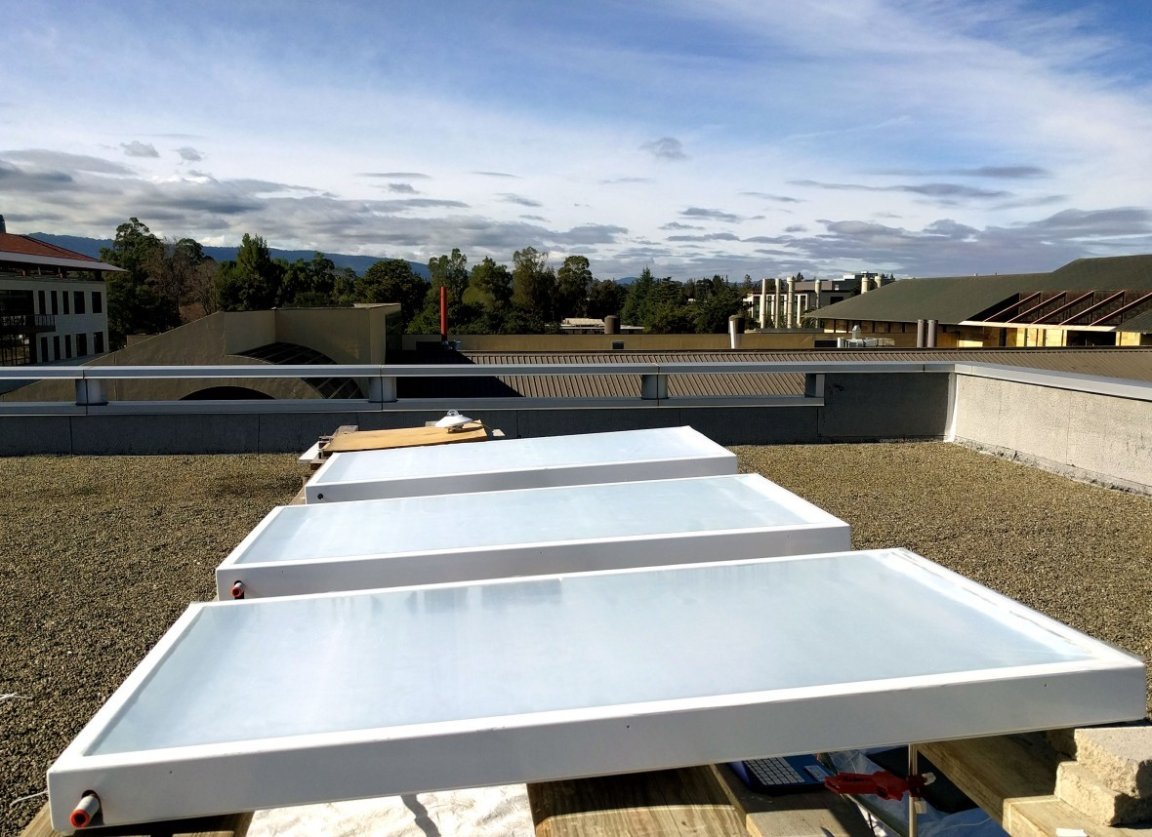
Radiative Sky Cooling
How can you cool a building without using any electricity? By making space do the work for you.
In research recently published in Nature Energy, a group from Stanford University used mirror-like panels to keep a building cool by radiating heat straight back into space.
“If you have something that is very cold — like space — and you can dissipate heat into it, then you can do cooling without any electricity or work. The heat just flows,” explained Shanhui Fan, Stanford professor of electrical engineering and senior author of the paper. “For this reason, the amount of heat flow off the Earth that goes to the universe is enormous.”
This process is called radiative sky cooling, and it’s the same phenomenon you observe when watching heat waves rise from hot pavement. Fan’s group has been working on putting this process to use since 2013. Earlier work showed that the team’s multi-layer optical film, designed to reflect 97% of sunlight, could keep a surface cool; this made it useful for solar panels, which are less efficient when overheated.
Cheap and Green
By scaling the system up, Fan’s team has shown that it can also make running water colder, which could be piped through walls to cool an entire building.
A simulation of how the system would work atop a hot Las Vegas two-story office building was promising: over the course of a summer, the panels reduced the energy needed to cool the building by greater than 20%, with daily reductions as high as 50%.
Given the high climate costs of generating electricity, this system — which requires no electricity to operate — would not only be cheaper, but also more environmentally friendly.
“With this technology, we’re no longer limited by what the air temperature is,” said Eli Goldstein, co-lead author of the paper. “We’re limited by something much colder: the sky and space.”